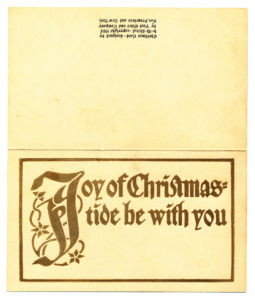
May you have a safe and healthy Christmas, wherever you are and whichever holiday you celebrate.
San Francisco bookseller & publisher, 1898-1968
 Broadly speaking, a “book” is a collection of printed pages set into a binding, a “pamphlet” are those same printed pages without a binding, and “ephemera” are single-sheet or single page documents which are not meant to be preserved. In practice, the lines between book-pamphlet-ephemera can be murky, especially with a publisher like Paul Elder who produced such a wide range of output.
Broadly speaking, a “book” is a collection of printed pages set into a binding, a “pamphlet” are those same printed pages without a binding, and “ephemera” are single-sheet or single page documents which are not meant to be preserved. In practice, the lines between book-pamphlet-ephemera can be murky, especially with a publisher like Paul Elder who produced such a wide range of output.
The Absent-Minded Beggar is a piece that exists in that murky boundary between “pamphlet” and “ephemera.” It’s just a single, large, folded sheet, containing three of Rudyard Kipling’s poems. On the other hand, the front is laid out as a formal title page. The example pictured here was included as a supplement to the April 1900 edition of Personal Impressions magazine (Vol. 1, No. 2). It’s not known whether there were other versions of this title issued separately.

Kipling published “The Absent-Minded Beggar” just five months previously, on 31 October 1899, in London’s Daily Mail newspaper. The Second Boer War had started three weeks before, and the British government had called up the Army Reserve. Army pay, however, was much less than the men could earn at their regular jobs, and the drop in salary forced many families into poverty. In addition, there were no laws guaranteeing the reservists could return to their old jobs when the war ended. Kipling’s poem was intended to raise money for the reservists and their families. With that in mind, Kipling and the Daily Mail‘s owner, Alfred Harmsworth, hired the famous composer Sir Arthur Sullivan to set the poem to music. The immediate popularity of the poem and song were such that the Daily Mail‘s “Absent Minded Beggar Fund” raised over £250,000. Kipling was offered a knighthood, but declined.
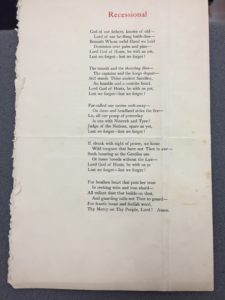
The other two poems in the piece are also well-known. “Bobs” was the affectionate nickname of Field Marshal Frederick Sleigh Roberts (1832-1914), one of the most successful British military commanders of the era when the British Empire was at its zenith. He was a short man, hence the first line “There’s a little red-faced man, which is Bobs.”
Kipling composed “Recessional” in 1897 for Queen Victoria’s Diamond Jubilee. It was first published in The Times on 17 July 1897. The refrain “lest we forget” was taken from Deuteronomy 6:12, “Then beware lest thou forget the Lord which brought thee forth out of the land of Egypt.”
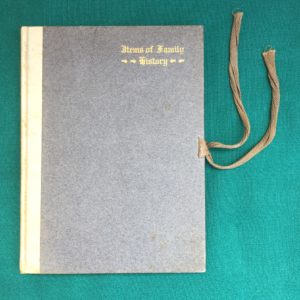
It’s a question many have pondered in middle age: how do I pass along my family history to my children and grandchildren? Nowadays one might type up some stories on Microsoft Word and enter data into ancestry.com, but if you were a rich San Franciscan at the turn of the twentieth century, you might commission a local publisher to print a book. That’s what William Alston Hayne II did, and the result was Items of Family History (1902).
Hayne (1855-1937) was born in South Carolina to a wealthy family, but they lost everything in the Civil War. The family moved to California, and there, in his forties, William fell in love with Maud Eloise Chase Bourn (1867-1948). The Bourns were also wealthy, and Hayne was embarrassed that he had little money to contribute to the match. Impulsively, he joined the throngs of fortune-seekers in the Nome Gold Rush so that he could marry Maud as a man of means, but he soon returned with the same empty pockets he had left with. Fortunately, on 27 December 1899, Maud married him anyway.
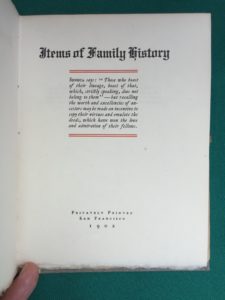
The Bourns were rolling in money: Maud’s brother was William Bowers Bourn II, who in the 1880s had revitalized the family’s struggling Empire Mine in the Sierra foothills town of Grass Valley. He was founder and president of the San Francisco Gas Company, and in the 1890s arranged a merger with the Edison Light and Power Company; that combined entity would later become Pacific Gas and Electric Company (PG&E). He was also an investor in San Francisco’s Spring Valley Water Company, and was regularly criticized by the San Francisco press as gouging the people with his high water rates. Bourn was good friends with architect Willis Polk, who first designed the Bourn Mansion on Webster St. in San Francisco, and then later their grand Filoli estate on the peninsula. Bourn served as president of the Pacific Union Club, and contributed much time and money to the planning of the 1915 Panama-Pacific International Exposition. During World War I, he was president of a group called Friends of France, and also co-created the American League of California, with the goal of providing money and manpower to the Allies in Europe. In 1920, in recognition of his service, France awarded him l’Ordre National de la Legion d’Honneur.

But back to our little book, which is concerned only with the ancestry of William Hayne. There are five short chapters, one for each of five pedigree lines: Hayne (his father), Alston (father’s mother), Motte (father’s mother’s mother), Stiles (mother), and Duncan (mother’s mother). No author is named, so either Hayne wrote the copy himself, or hired a ghostwriter. Earlier versions of the Paul Elder checklist credited Pauline Stiles, author of the Elder publication New Footprints in Old Places, as the author, and as Hayne’s mother’s maiden name was Stiles there was a possible connection. However, I have investigated William’s and Pauline’s pedigrees and can find no common ancestors, so I now believe the author attribution to be incorrect.
Only twenty-four copies were printed, the second-smallest Elder print run known after The Passing of an Oak. Presumably, Hayne printed just enough copies to give to children, grandchildren, and other relatives. The book is very finely made, with gold-embossed grey paper over boards, and high-quality laid paper. It was printed at the Twentieth Century Press, almost certainly typeset and printed by John Henry Nash.
Our thanks to Alan Thomsen for the opportunity to photograph his copy of Items of Family History.
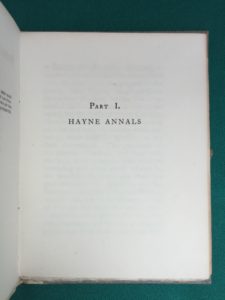
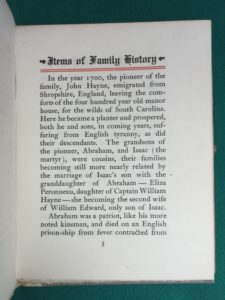



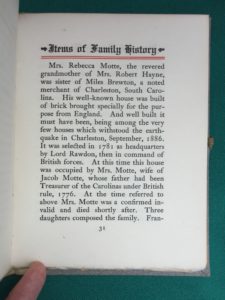
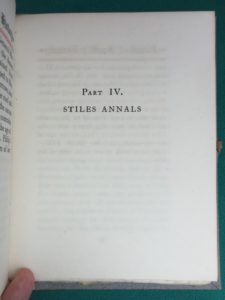

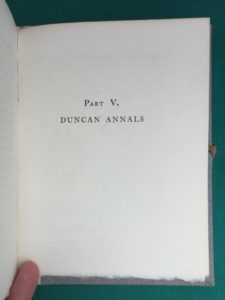

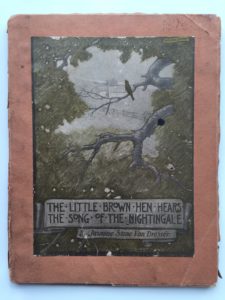
This slender volume gets my vote for the gentlest, loveliest title in the Paul Elder catalog. The Little Brown Hen Hears the Song of the Nightingale (1908) was written by Jasmine Van Dresser and illustrated by her husband William. The book contains two short bedtime stories for children: the title tale and “The Little Apple Tree Bears a Golden Harvest.”
“The Little Brown Hen Hears the Song of the Nightingale” is the story of an ornery goose and a gentle hen; the moral is “it isn’t always those with the loudest voices that have the best things to say.” The second tale teaches how Nature is interconnected, and how good things come to those who wait. William Van Dresser’s illustrations are very nice indeed, and he also supplied a custom decorated border for each story. His frontispiece is a mystery: a woman stands in the moonlight, holding out her cupped hands; this scene does not appear in either story. There is a brief introduction by Margaret Beecher White, noting that “it is the duty of all good, useful stories to give a message to their readers,” and that “the two dainty stories contained in this little volume each carries its message of truth.”
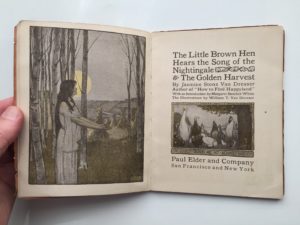
Jasmine Edson Stone was born in 1875 in St. Louis, Missouri. She graduated from Randolph-Macon Woman’s College in Lynchburg, Virginia and was working as an actress in New York City when she met her future husband. By 1915, the Van Dressers, along with their sons Cleland and Peter, became well-known actors in New York City, most notably performing everyday dramatic scenes of an American family for soldiers at nearby military bases. Jasmine wrote the screenplays, noting there was nothing more dramatic than the life of parents dealing with the needs of children. She was a member of the Authors Guild (then called the Authors League of America) and wrote many children’s books in her career, with such titles as Jimsey, The Wonderful Hammer, The Story of Silky, The Kitty With the Black Nose, and The Little Pink Pig and the Big Road. Jasmine and William spent their final years in Boca Raton, Florida. She died in 1948, and is buried in Solebury, Pennsylvania.
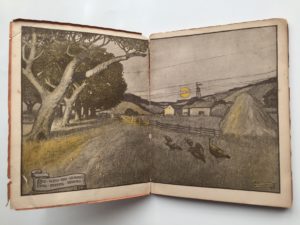
William Thatcher Van Dresser was born in 1871 in Memphis, Tennessee. He was a talented athlete, and spent four years as a semi-pro baseball player, mostly in the Southern Association and Texas League. When his team folded in 1896, he headed north to pursue a career in art. By 1900, he was living in on Fifth Avenue in Manhattan. In 1903 he and Jasmine were married; Cleland was born in 1904, and Peter in 1908. William’s reputation as a commercial artist was growing, and he was a popular artist for magazine covers. He also began illustrating books, including today’s spotlight and the Jack London novel The Little Lady of the Big House. Later he was commissioned to paint portraits of Presidents Calvin Coolidge and Franklin Roosevelt. William died in 1950, and is buried in Tampa, Florida.
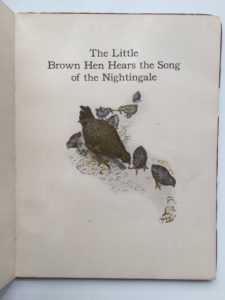
Margaret Humphrey Beecher White (1868-1948) was an author on Christian Science topics. She was granddaughter of the prominent minister Rev. Henry Ward Beecher, and grand-niece of Harriet Beecher Stowe, author of Uncle Tom’s Cabin.
Thanks very much to Kris Rutherford for historical information on the Van Dressers.
Sources:
“William Van Dresser’s Sketchy Side,” by Kris Rutherford, 12 July 2016
Jasmine Van Dresser burial site
William Van Dresser burial site
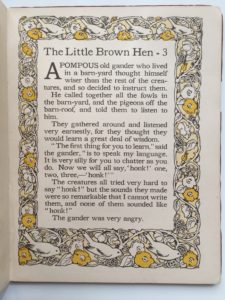
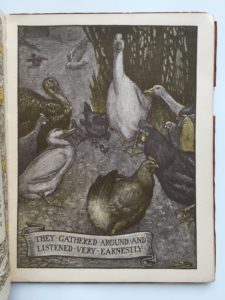
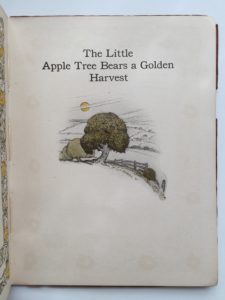
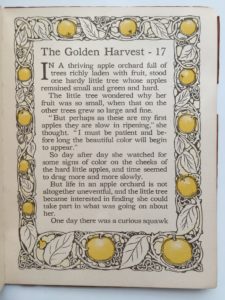
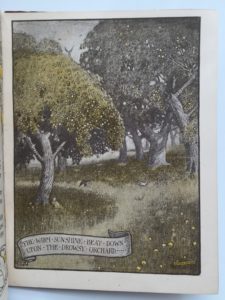
Welcome to the newly-redesigned paulelder.org! We hope you like these new features:
Thank you for visiting!